Hi there! Are you curious about how fast snake plants grow? As a plant enthusiast, I’m here to give you the rundown on all things related to growing and caring for your snake plant. If you’re looking to add more greenery to your decor, then this is the perfect article for you!

Snake plants are an incredibly popular houseplant these days, and for good reason. Not only do they look beautiful with their bright green foliage, but they also require minimal care—which makes them ideal for busy people who don’t have a lot of time or energy to dedicate to gardening. But just how quickly can you expect your snake plant to grow?
In this article, we’ll take a closer look at what factors influence snake plant growth rates, how long it takes for your snake plant to reach its maximum size, and some tips on how to keep your snake plant healthy so that it grows as fast as possible. So let’s dive right in and get started!
Contents
- 1 How Fast Do Snake Plants Grow Indoors?
- 2 How Fast Do Snake Plants Grow Outdoors?
- 3 How To Make A Snake Plant Grow Faster
- 4 How Big Will A Snake Plant Get?
- 5 How To Make a Snake Plant Grow Tall
- 6 How To Stunt The Growth Of A Snake Plant
- 7 Why Is My Snake Plant Not Growing?
- 8 How Long Does It Take For Snake Plants To Multiply?
- 9 Does Coffee Help Snake Plants Grow?
- 10 Do All Snake Plants Get Tall?
- 11 How Long Will A Snake Plant Live?
- 12 Conclusion
How Fast Do Snake Plants Grow Indoors?
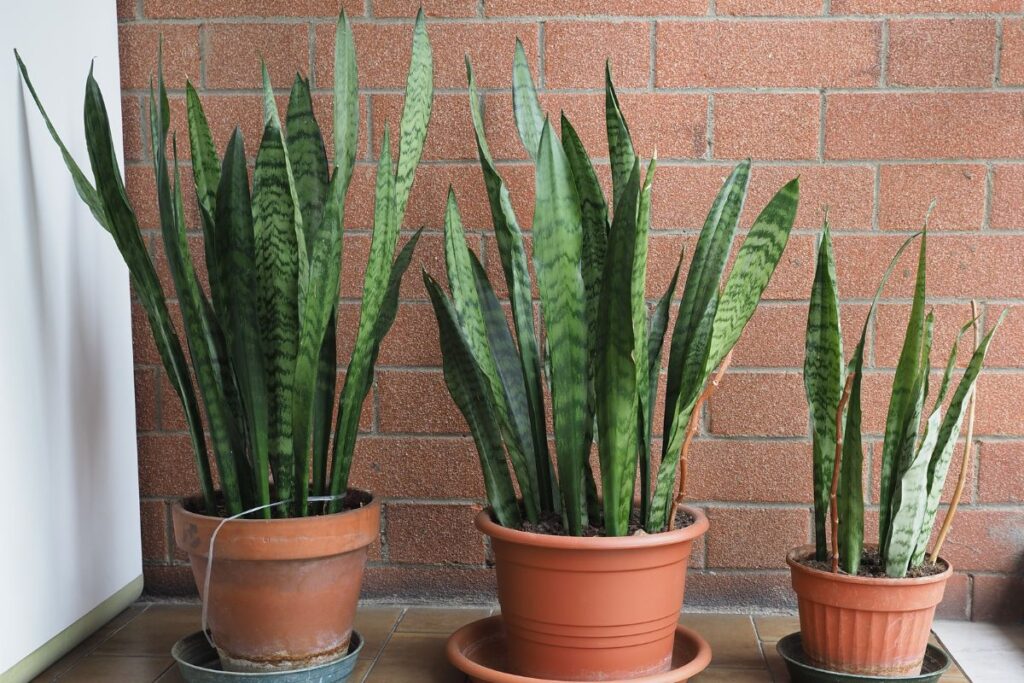
Snake plants, also known as Sansevieria or Dracaena trifasciata, are a great choice for gardening indoors. But how fast do they grow? That depends on the type of snake plant and the environment in which it is planted.
The growth rate of snake plants varies depending on their potting soil, light exposure and water requirements. If your snake plant gets enough bright light and well-draining soil, then its growth rate will be faster than if it’s kept in a dimly lit area with moist soil. Depending on the type of snake plant you have, some varieties can reach up to two feet tall!
To encourage healthy growth, make sure that your potted snake plant has access to plenty of bright, indirect light—at least 6 hours per day—and use a mix of peat moss and sand as potting soil. This combination ensures good drainage so that your plant won’t become overwatered or suffer root rot.
With proper care and maintenance, your snake plants can thrive indoors while adding life to any room!
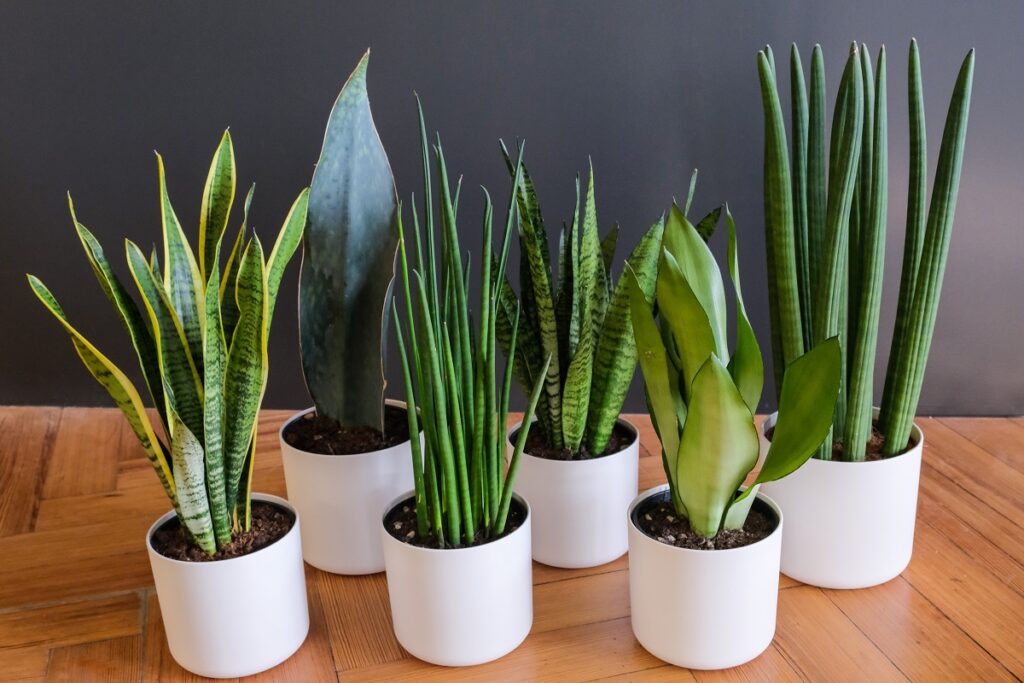
How Fast Do Snake Plants Grow Outdoors?
Snake plants thrive outdoors, and depending on the amount of direct sunlight they receive, their growth rate can be significantly faster. In a sunny spot, it’s not uncommon to see your snake plant increasing in size by several inches to one foot per year. When planted outdoors, you may also notice more outward growth as opposed to height gain—this is perfectly normal for these resilient plants!
To ensure healthy and fast-paced growth during summer months, make sure your snake plant has access to plenty of bright light without too much heat exposure. This will encourage healthier foliage that is likely to last longer over time. A moderate soil mix with well-draining properties should also provide enough nutrients for optimal growth.
You might even consider adding some organic fertilizer or compost into the soil once every few months to give it an extra boost. Keeping up with regular watering and maintenance such as pruning are key steps towards promoting better health and increased outward expansion of your beloved green friend!
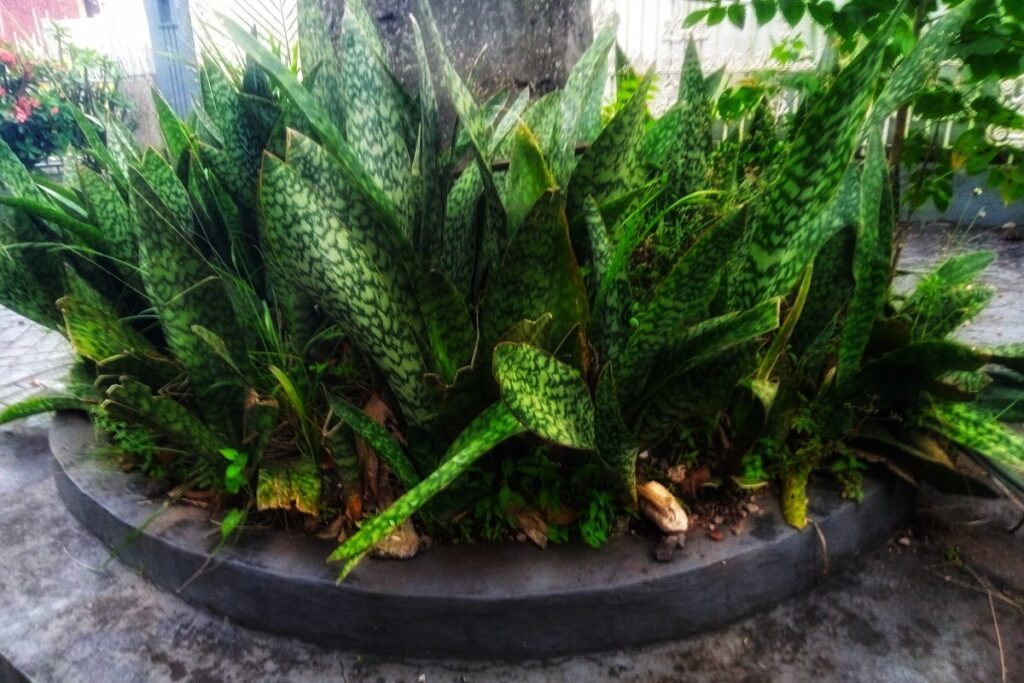
How To Make A Snake Plant Grow Faster
Making a snake plant grow faster is all about providing the right conditions. When it comes to watering, this means not giving your plant too much water; instead, you should stick to a regular watering regime that allows excess moisture to drain away and never let the soil become soggy.
Next, light levels are important for rapid growth in snake plants. While they can tolerate low-light situations, optimal growth requires bright indirect sunlight or some form of artificial lighting. If you find that your snake plant isn’t growing as quickly as you’d like, consider increasing the amount of light it receives.
By following these tips and making sure your snake plant has access to plenty of water and adequate light levels, you’ll be well on your way to experiencing its rapid growth!
How Big Will A Snake Plant Get?
Snake plants, or sansevierias, are slow-growing plants that generally reach a maximum height of about 3 feet tall. However, there are dwarf varieties available that can stay much smaller in size throughout their lifetime. It is important to be aware that if the roots become too waterlogged it may cause root rot which could ultimately reduce its size as well.
When purchasing a snake plant from a nursery or garden center you will likely find them already at full mature height and width unless they specifically offer one labeled as a “dwarf variety”. Money tree plants (pachira aquatica) have similar foliage but tend to grow taller than the average snake plant, reaching heights up to 10 feet tall when grown outdoors depending on the climate and other environmental conditions.
Overall, snake plants do not require excessive amounts of maintenance and remain relatively small in comparison with many other houseplants making them an ideal choice for those seeking low-maintenance greenery indoors.
How To Make a Snake Plant Grow Tall
If you want to grow a tall snake plant, there are several things that you can do. First and foremost, make sure it is in an environment with enough natural light to promote upward growth. Snake plants prefer indirect sunlight, but they still need some exposure to the sun’s rays. Additionally, be mindful of how much water your snake plant receives. Overwatering can lead to root rot and stunted growth. A good rule of thumb is to allow the soil to dry out between watering sessions.
You should also consider giving your snake plant a fertilizer solution every few months; this will help promote healthy growth. The type of fertilizer you use should depend on what kind of potting soil your snake plant is growing in.
Finally, think about switching up the size of the pot if needed; larger pots will give more room for roots to spread out and provide better access to nutrients from the dirt below them. This might encourage taller growth as well! With these tips in mind, you’ll be well on your way toward achieving a tall and vibrant snake plant!
How To Stunt The Growth Of A Snake Plant
Stunting the growth of a snake plant is possible with minimal care and indirect light. Snake plants are slow growers, making it easier to maintain their size over time. To stunt the growth of your snake plant, you should minimize its exposure to direct sunlight. Place your snake plant in an area that receives only indirect light for most of the day. This will limit the amount of energy available for growing taller leaves or producing new shoots. Additionally, water your snake plant sparingly; overwatering can cause rapid growth spurts and root rot.
During dormancy periods, when there is less active growth occurring within the plant, take extra precautions to ensure that your snake plant’s height remains limited by providing even less water than usual and placing it in a shadier spot than normal. With careful attention and consistent maintenance, you can keep your snake plant at just the right height without sacrificing any of its health or beauty!
Why Is My Snake Plant Not Growing?
If your snake plant isn’t growing as you’d expect, it’s likely that the cause is related to one of several possible factors. First, check the amount and type of indoor light available for your snake plant. Different types of snake plants require different amounts and types of light in order to thrive. If your particular species doesn’t appear to be getting enough sunlight, consider finding a spot closer to an east- or west-facing window.
Next, make sure you’re using a fresh soil mix specifically designed for succulent plants like snake plants when planting them or repotting them. This will provide just the right combination of drainage and aeration needed for optimal growth. When watering your plant, take care not to overwater; too much water can damage the roots and inhibit proper growth. Finally, research which species you have and ensure that it’s receiving the proper care based on its specific needs—this includes fertilizing at regular intervals if necessary. In short: with the right conditions and proper care, there’s no reason why your snake plant shouldn’t grow!
How Long Does It Take For Snake Plants To Multiply?
Now that we have discussed why your snake plant might not be growing, let’s take a look at how long it takes for them to multiply. Snake plants can easily be propagated through leaf cuttings or root divisions. Here is a list of ways you can propagate your snake plant:
- Leaf Cuttings – Leaf cuttings are the easiest way to multiply a snake plant. Cut off a healthy leaf and place the cutting in a potting mixture. You can also cut the leaf horizontally into multiple 2-inch sections. Keep the soil moist and provide bright, indirect light. New snake plants should grow from the cuttings in about 2-3 months.
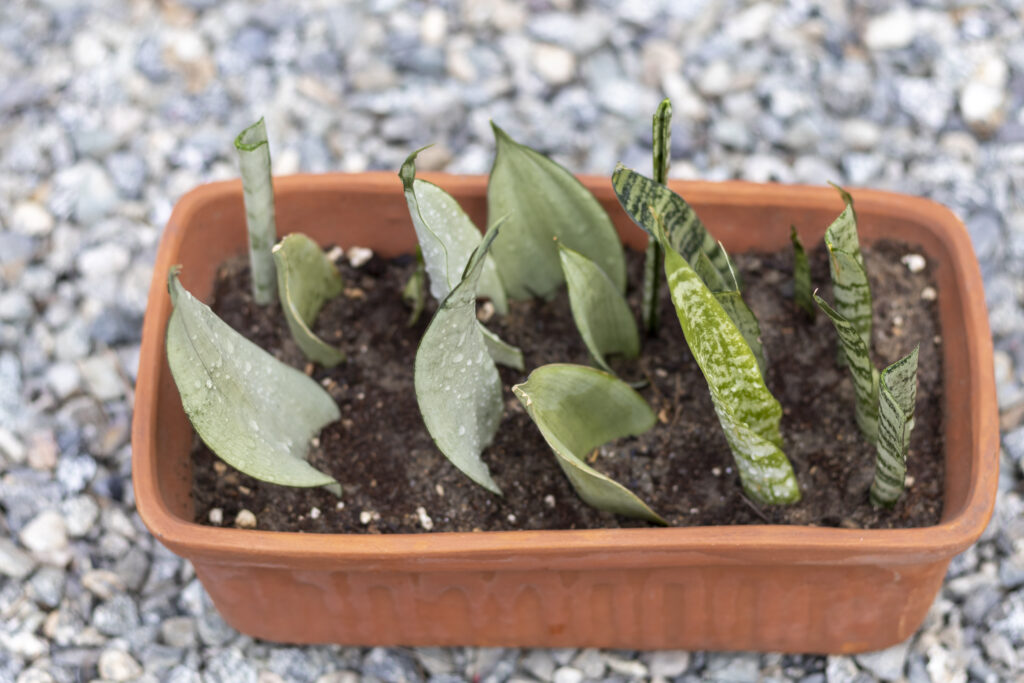
- Root Division – Snake plants can be divided at the root when repotting. This will produce multiple plants from one. It takes about 1-2 weeks from the time of division for the new plants to establish themselves and start growing.
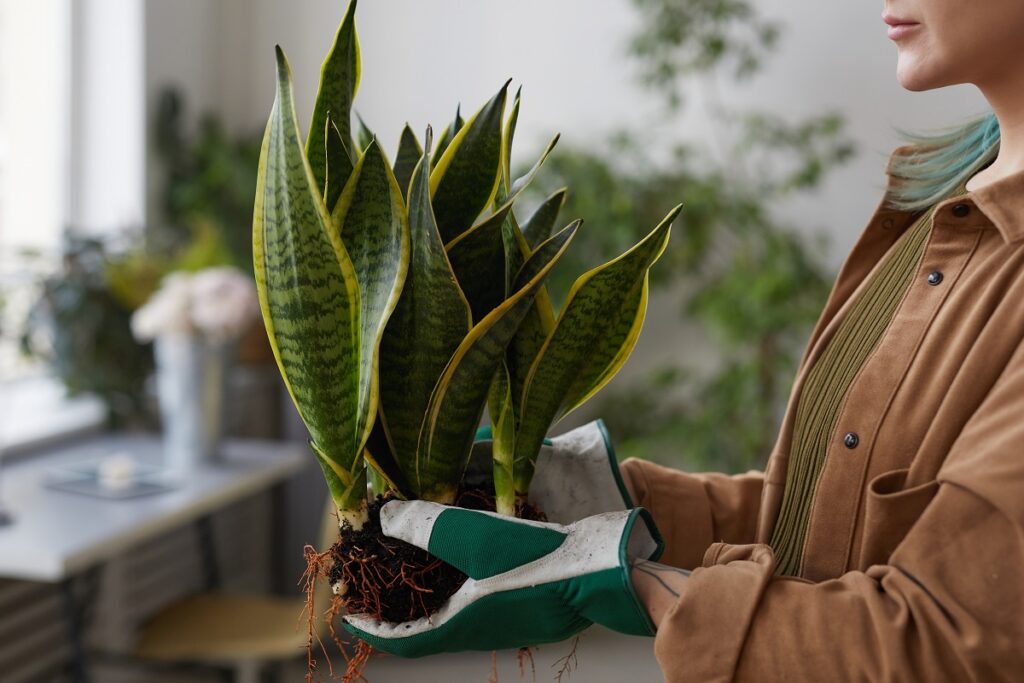
- Offsets – Offsets are baby plants that grow at the base of the mother plant. They can be separated and planted in their own pots. This can take 4-6 weeks for the new plants to root and start growing.
By following these methods, you should start seeing results within weeks as some parts may even begin sprouting right away! With proper care and attention, your new plants will continue to grow rapidly under ideal conditions. So if you’re looking to expand your collection of beautiful houseplants, propagation via multiplication is definitely an easy and effective way to do so!
Does Coffee Help Snake Plants Grow?
No, coffee does not help snake plants grow. While it can provide a weak dose of nitrogen, this won’t speed up the growth rate of your snake plant. In fact, over-fertilizing with too much nitrogen will cause more harm than good to your beloved houseplant.
The best way to ensure that your snake plant is healthy and growing as quickly as possible is by providing it with adequate light, water, temperature control and soil nutrients. Snake plants are also known for their short period of dormancy which naturally slows down its growth rate; during this time you should avoid fertilizing or adding any additional external sources of nutrition. Keep in mind that if you give your snake plant too much fertilizer or coffee grounds, it could end up stunting the overall size and health of your plant.
So if you want to get the most out of your snake plant experience, make sure to stick to natural methods such as proper light exposure and regular watering. This will keep them happy and thriving without risking potential damage from extra nutrients like coffee grounds!
Do All Snake Plants Get Tall?
Well, that depends. Snake plants come in a wide range of sizes and shapes, so it really comes down to the species you have chosen. Many snake plant varieties including Sansevieria cylindrica can reach up to 3 feet tall or more, while others tend to stay much shorter. Sansevieria ehrenbergii ‘Samurai Dwarf’ is one such example, as they usually only grow up to 6 inches high.
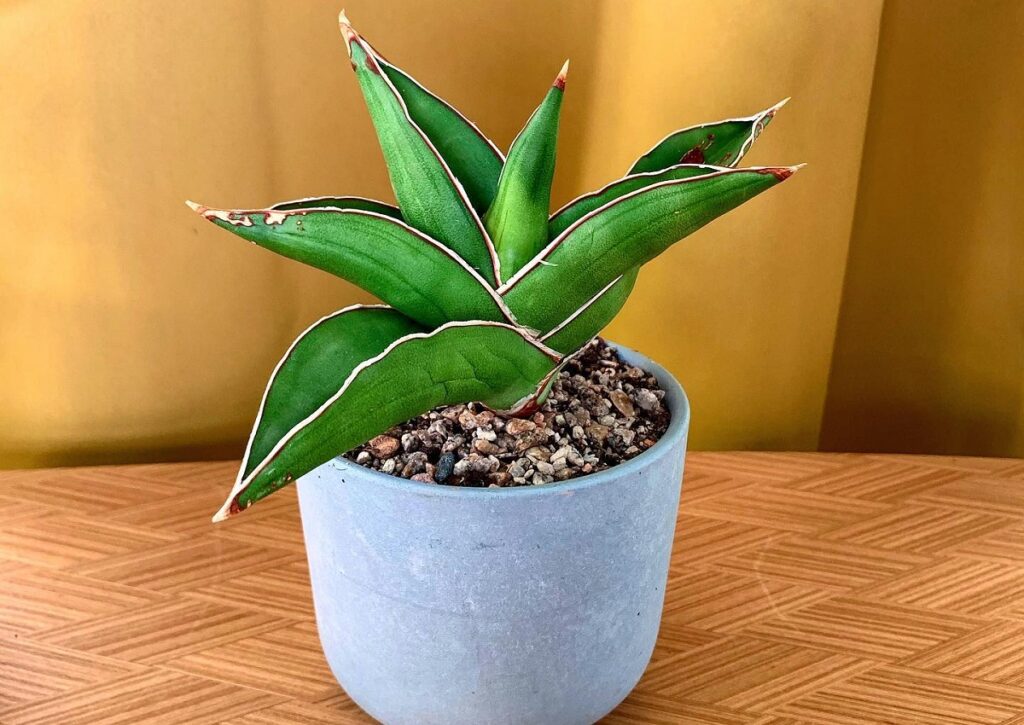
If your goal is height, then be sure to give them plenty of space—even when confined within a pot—as this encourages strong root growth and healthier foliage above ground. Plus, many taller varieties produce sweet smelling flowers during the summer months if given ample sunlight throughout the day!
How Long Will A Snake Plant Live?
Snake plants can live for many years if they are healthy and well cared for. If you give your snake plant the best growing conditions and take proper care of it, then its lifespan can be greatly extended. This includes regular watering and fertilizing; providing adequate light; repotting when necessary; and controlling pests or weeds that may disrupt the environment around the plant. Taking all these steps will help create an ideal situation for your snake plant to grow and remain healthy for many years to come!
Conclusion
Snake plants are a wonderful addition to any home or garden. They’re low-maintenance and look great, plus they can grow quite large if taken care of properly! Snakes plants typically grow faster outdoors than indoors, but with the right amount of light, water and fertilizer you can get your snake plant growing quickly either way.
It’s important to note that not all snake plants will reach the same heights—some varieties may stay small while others might become very tall depending on their genetics and care regimen. Also, snakes plants don’t multiply as fast as some other houseplants do; it takes several years for them to produce offshoots. Finally, caffeine has been shown to have no significant effect on snake plant growth in most cases; however, it’s still worth experimenting with different fertilizers and nutrients if you want an even bigger impact.
Overall, taking good care of your snake plant will help ensure healthy growth over time. With proper maintenance and enough light & water, these hardy houseplants should continue bringing joy into your home for many years to come!
